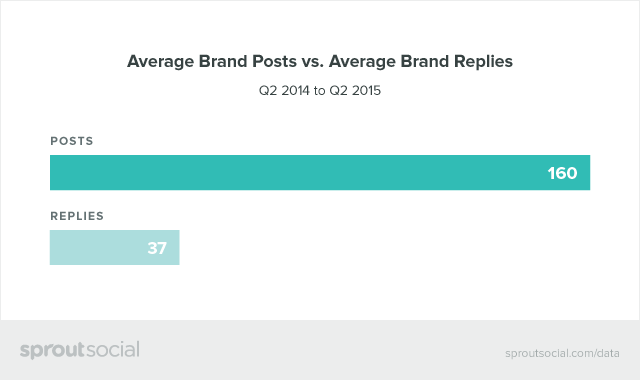Google Plus: Google’s Gift to Local Area Businesses – EXPANDED
Editor’s Note: A version of this article first appeared on 216digital’s Cleveland Plain Dealer blog. It was such a hit there, we’ve expanded this version to include a few more helpful details.
Have you noticed that local search has changed? What’s going on? Instead of local business sites alone, Google now shows Google Plus results alongside websites. If you don’t have a Google Plus page, or if your page is in bad shape, it won’t pop up in SERPs (search engine results pages). Whoa. This is serious. Luckily, there’s a lot you can do to optimize Google Plus for local business. In this post, we’ll cover some of the basic techniques, as well as point you towards some in-depth resources.
Google Plus and SEO: A Little Nepotism Never Hurts!
At this point, you’re probably wondering if Google Plus affects your search rank on Google. You bet it does! Claire Abraham, social media manager at 216digital, stresses the importance of Google Plus for SEO to every client we get. As she puts it, “The more of Google’s toys you play with, the more it likes you.” In other words, Google favors its own product, Google Plus, in considering what to show in search results. Now, before you start yelling, “unfair,” consider this: Google is a corporate business entity. As this post from Copyblogger reminds us, Google can do whatever they want. They don’t owe any of us anything! The trick is to figure out what Google likes—and just do it.
The real gold that Google Plus offers is that G+ pages display in Google search results when the user is logged in to their Google account. This gives users a direct chance to interact with your business’s page if they’re searching for your business or something that you rank for.
As a social media platform, this is where Google Plus really integrates with SEO efforts. Facebook posts don’t show up in Google SERPs. That puts Google Plus in a great position to integrate your social efforts with your SEO efforts.
Every social media platform has its own quirks, and Google Plus is no different. It’s not simply Google’s version of Facebook or Twitter. Google Plus is its own space with its own rules and best practices. You’ll need a thorough understanding of how Google Plus works before you start leveraging it for your local business.
Getting Your Local Business onto Google Plus
This is easy. Simply sign up for a Google Plus account. One important note—do not use a Gmail address to sign up. Use an address from your business domain name (for example, you@yourdomain.com). This will help greatly when you go to verify your page in the future.
Linking Google My Business and Google Plus
While My Business and Google+ are separate Google products, local business owners should link them to get the most out of Google’s presentation of their businesses. For business owners, that means logging into your Google Plus account (or creating one, if you don’t have one), then finding your My Business page and claiming it. Note: you’ll have to verify your business by phone or by postcard. This is critical! An unverified page won’t show up in SERPs.
Another critical step: you’ll need to determine if there are any duplicate Google My Business pages for your business. If there are, you must delete them. Also, you’ll need to ensure that your My Business page hasn’t been penalized. Duplicate pages and penalties will kill the SEO contributions which your My Business and Google+ pages should be making.
Your Business Info: Get It Right!
Just about every point we make in this article is critical. This one is no exception. You mustensure that your business name, address, phone number, and hours of operation are 100% correct. If not every bit of information matches up between your website and your My Business page, Google sees a problem.
Also, take note of this. As Casey Meraz writes on the Moz blog, you can’t use a PO box as your address, and you can’t list an 800 number as your phone number. If your business has a physical address, you need to list that address. You also need to list a phone number with a local area code.
You’ll find a Categories field as you’re filling out your profile. This field is extremely important. You’ll want to use all the Categories that are allowed for your industry. Note: these categories reflect what your business is, not what it does. If your business is Dave’s Dry Cleaners, your category would be “Dry Cleaners,” not “dry cleaning.” Also note—there are no custom categories! You have to choose from the available options.
Your Profile: Complete It!
An incomplete profile will only hurt your Google Plus page. Make sure you fill out every bit of information until the profile says it’s 100% complete. There’s a lot to do, so pay attention to the details. For example, you need to fill out your intro description. Make sure it’s relevant, engaging, and at least 250 words long. You’ll also want to upload high-quality photos of your business location.
To really round out your appearance on Google, consider hiring a Google-trusted photographer to do a 360-degree shoot inside your business location. Google calls this Business View, and it’s quite possibly one of Google’s greatest gifts to local businesses. Business View gives online users the chance to see what your restaurant or store looks like on the inside before they even leave the house. This is an especially great opportunity for retail establishments with a unique, well-branded décor.
Don’t use a Gmail address to sign up. Use an address from your business domain name (like you@yourdomain.com).
[clickToTweet tweet=”Don’t use a Gmail address to sign up for #GooglePlus. Use an address from your business domain name. #localseo” quote=”Don’t use a Gmail address to sign up. Use an address from your business domain name.”]
Remember how almost every point in this article is critical? Here’s another one. You need to link your website to your Google Plus page. This will allow your Google Plus page to appear in SERPs.
Along those lines, you’ll also want to claim a custom URL for your Google Plus page. This is your opportunity to have a URL that matches the name of your business. For both users and Google, this custom URL will look better than a string of numbers and letters.
You’ll see a section of your profile called Links. You’ll want to put as many relevant links in this area as possible. Relevant links include your blog(s), your social media pages, and any other online properties which make up your business’s digital assets.
Google Plus Circles

Among social media platforms, the Circles function is unique to Google Plus. Circles are a way of organizing your connections—say, into groups like Personal Friends, Industry Leaders, and Coworkers. While Circles are primarily a backend organizational feature for your benefit as a user, they do affect your connections: when you post to Google Plus, you can choose which Circles see that post.
Like many aspects of Google Plus, Circles really have no analog on Twitter and Facebook. As Cassy Hicks Kerr (@modernmktgspark) writes on MMSpark, “The key to building circles is not to focus on the numbers but on the relationships you have with the people you circle.” On Twitter and Facebook, you might try to get as many relevant followers as possible. In Google Plus Circles, it isn’t the number of people in any given Circle that bring you marketing value; rather, it’s the people themselves and their position in your niche. Think of it like “less is more.” You want to get the right people in the right Circles. Rather than a broadcast perspective, trying to hit as many random readers as possible, this is “niche-casting”: hitting a few people in your niche who will find your content insanely valuable.
In this respect, the structure of Google Plus is far more optimized for digital marketing than the structure of Facebook–or even Twitter.
Posting to Google Plus
Google Plus has some quirks. For example, when you post to your Google Plus page, the first 45-50 characters get pulled like a title in SERPs. Weird, right? You’ll just have to work with it. That means writing the first 45-50 characters of your G+ post like a titleand like the first line of a post at the same time.
If you want to include a link in your Google Plus post (and you should), make sure you use the Link function rather than adding the link manually to your text. This Link function is SEO gold.
How often should you post to Google Plus? Well… the answer is, “regularly.” We recommend posting every day. However, if this simply isn’t feasible, shoot for once a week. Whatever you do, stick to it.
Getting Followers on Google Plus
To get followers, you should join relevant Communities and stay active in them. That means posting every day. However, take note: no one really scrolls through the Google Plus newsfeed like they would on Twitter or Facebook. You can choose which Circles see your posts, thereby targeting your information to the most interested parties. You should take advantage of this function. It will increase the content value of your brand in your followers’ eyes.
Communities and posting aren’t the only way to gain followers. Social media is all about networking. Since you’re using Google Plus for local business marketing, why not start leaving excellent reviews on the G+ pages of other local businesses? Whether you do this out of the blue, or for a longstanding partner of your business, you can’t measure the value of this act of good will. Don’t be surprised if some businesses reciprocate the favor and start leaving excellent reviews on your page.
[clickToTweet tweet=”Don’t just dump your email contact list into G+ and invite them all to follow you. #googleplus” quote=”Don’t just dump your email contact list into G+ and invite them all to follow you. “]
What shouldn’t you do to gain followers on Google Plus? For starters, don’t simply dump your email contact list into G+ and invite them all to follow you. That’s unprofessional, and it’s unlikely every contact in your list will find your business relevant.
The Bottom Line
Google Plus is essential to the toolbox of any small business. Like Facebook and Twitter, it offers great social networking opportunities; but unlike them, it also integrates easily with your Google SEO efforts.
If your small business isn’t using Google Plus yet, sign up now and start interacting with your customers. If you’re already using Google Plus for local business, we want to hear from you. What’s working? What’s not working? Leave a comment below, and let’s continue learning together.













